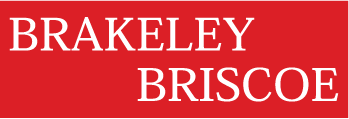Current Issues in Independent Schools
Anne C. Storch and Alden F. Briscoe, MAT
We interviewed about a dozen independent school development executives to get a feel for their concerns relative to development. The individuals we talked to represented boarding and day schools; schools located in the East, West, North, and South; sectarian schools and schools with religious affiliations; and elementary schools, high schools, and schools with grades K through 12.
Although we heard a wide range of issues, certain issues stood out. In no particular order these include:
Admissions
Elite schools have long waiting lists and can afford to be very selective, but many schools are concerned about tuition revenue. If their enrollment is 10% to 20% below what they budgeted, it takes a real toll on their finances. It also puts pressure on them to accept students who don’t fit their school, which leads to further problems down the road when these students fail or have discipline problems. Some schools—especially boarding schools—admit that they could fill up their classes with foreign—especially Chinese and Korean – students but that detracts from the kind of diversity for which most schools are searching.
The Board
“My board doesn’t understand fundraising.” We heard this complaint often. At many schools, particularly elementary schools the school’s board is the first board on which the members have served. They don’t understand their role, either in regards to fundraising or in setting policy and keeping out of the day to day operations. Some development staffs are pushing their boards to do fundraising or training them on fundraising, but this eats up staff time. In some situations this problem can be overcome, especially by the leadership of a board chair or a few key members of the board. Another concern is the ongoing relationship between the Board Chair and the Head of School.
Under Staffed
Many elite schools have large, sophisticate advancement staffs, similar to large colleges. They have researchers, major gifts officers, planned giving officers, alumni affairs officers, events managers, and data input staffs. But many development staffs are spread very thin with a skeleton staff attempting to perform all functions, and feeling that they are not doing anything as well as they would like.
Alums of Many Schools
Many individuals we talked to – especially those at elementary schools complained about being only one of many recipients of philanthropy. One DoD said, “Our (elementary) students go on to independent secondary schools, colleges, and (often) to graduate schools. Each institution has its hand out, and we may be the third from the last they have attended. Alums and their parents and grandparents tend to forget us.”
Parents Don’t Understand Philanthropy
For many parents, especially those with several children in our school, it’s tough to convince them that philanthropy is important in addition to tuition. When they see a large (and often rising) tuition bill, they may feel that philanthropy is the straw that broke the camel’s back. This may be a particular problem with schools serving students with special needs. Also, parents of foreign students may not understand American philanthropy. However, some of those foreign parents have attended US schools and colleges, and they understand the role of philanthropy.
Too Many Events
Events tend to be a time sink. Some development departments are looking at doing their benefit/gala every other year because it is so labor intensive. One school was so top heavy in events that it took them five years to wean themselves from some of the events.
Outside Groups Doing Fundraising
Some development staffs are trying to get a handle on outside groups doing fundraising activities: parents students, alumni advisory groups, activity groups, sports teams, the band, etc.) These activities distract from the bigger efforts and detract from the Annual Fund.
Shifting From Parent to Alumni Giving
Day schools especially may have relied on parent giving. The older day schools are now shifting to find support from their older alumni. They are also finding that the cultivation of the alumni is paying off during capital campaigns, but even though some schools have alums who are in prime giving ages, they have not moved toward cultivating and soliciting alums.
Two Alumni Advisory Boards
One School has two alumni advisory boards – one for young alums and one for the older alumni. The younger alumni want to be very engaged with events etc. That draws a lot of staff time. They want all their ideas implemented and they all seem to want to be the CEO of the advisory board. Some alums want to mentor students and that has worked well.
Challenge Fatigue
There seems to be challenge fatigue from fundraising challenges. There needs to be a balance.
Low Endowments
Many schools have very low endowments and some are entering into endowment campaigns to make the school sustainable.
Lack of Talent
Many development officers with whom we talked are struggling with finding and retaining good talent.
Large Gift Opportunities
There is a struggle to create inspiring gift opportunities to garner larger gifts.
Social Media
Everyone seems to be using social media to engage their alums and to make giving easier. Results so far seem to be mixed.
The Election
One DoD wondered how the election might affect giving. There is hope that if the stock market continues to go up, individuals will make larger gifts.
Many thanks to those we talked to for this article, including:
- Cathy Coleman, Schenck School
- Andy Hamlin, The Hun School
- Phil Higginson, Ravenscroft School
- David Lee, Harvard Westlake
- Ted Lutkus, Westtown School
- Brenda Beach Lynch, Kildonan School
- Jenny McHugh, Springside Chestnut Hill School
- Jim McKey, formerly of George School, now a consultant
- John Reese, Allendale Columbia School
- Kelly Baxter Spitz, Indian Mountain School
- Larry Van Meter, Moorestown Friends School.
